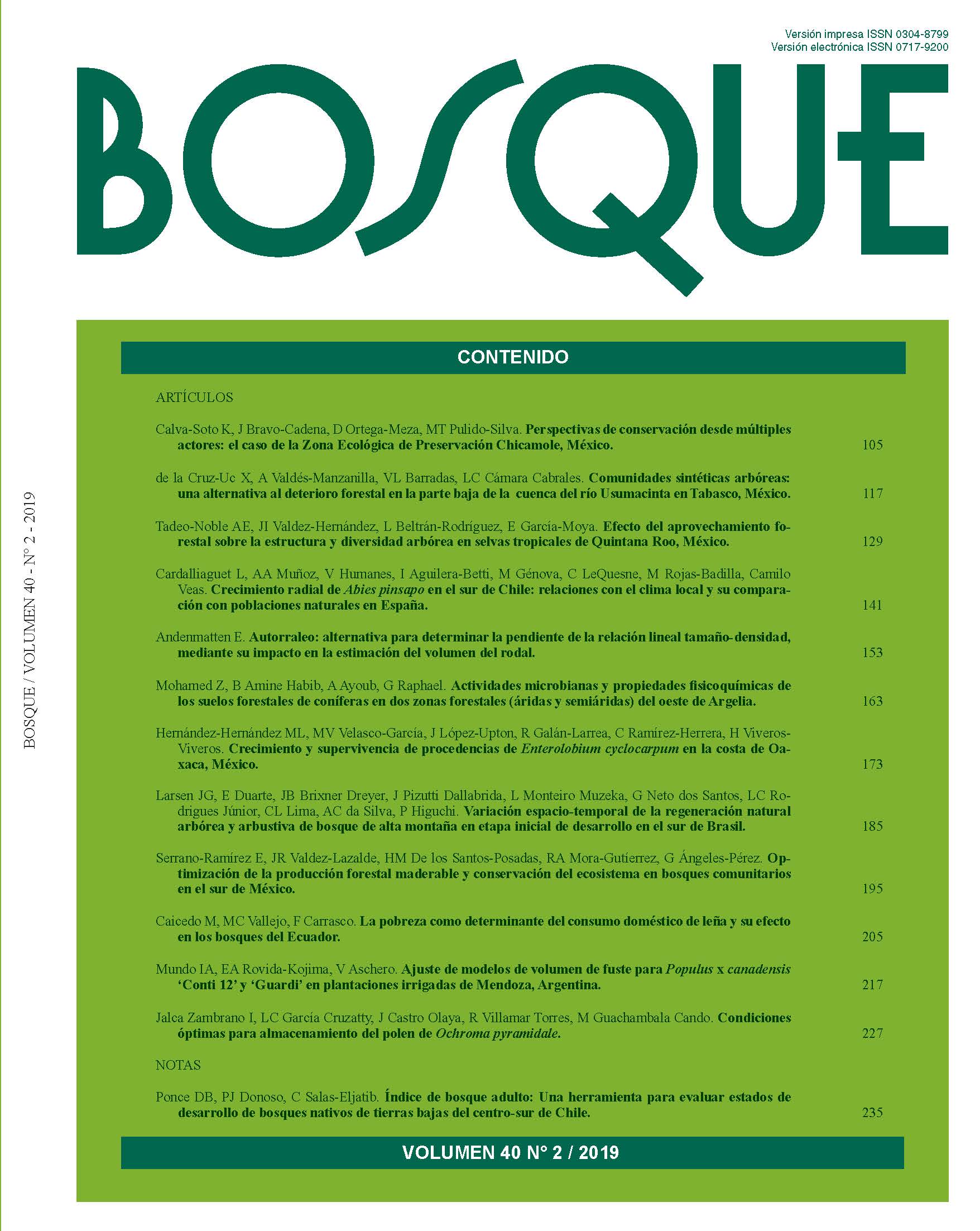Efecto del aprovechamiento forestal sobre la estructura y diversidad arbórea en selvas tropicales de Quintana Roo, México
Contenido principal del artículo
Resumen
El aprovechamiento maderable puede ocasionar modificaciones en atributos ecológicos y dasonómicos de la vegetación arbórea, afectando la productividad y biodiversidad de los ecosistemas; sin embargo, poco se conoce del efecto en selvas tropicales de México. El objetivo de este estudio fue comparar la estructura y diversidad en selvas ejidales bajo aprovechamiento forestal en Quintana Roo. Fueron desarrollados dos inventarios (2009) en áreas forestales permanentes de selva mediana subperennifolia: en Bacalar se aplicaron 625 unidades de muestreo (10x25 m distribuidas en 15,6 ha) y en Noh Bec 302 unidades (10x40 m ubicadas en 48,32 ha). En ellas se midieron todos los árboles con diámetro normal ≥ 7,5 cm para documentar la riqueza y variables dasométricas. Se estimaron índices estructurales (IVI e IVMF) y de diversidad (Shannon-Wiener H’ y Sorensen Cs). En Bacalar se registraron 86 especies arbóreas (36 familias, 81 géneros), 284 individuos ha-1, 7,3 m2 ha-1 de AB y volumen de 86,4 m3 ha-1; en Noh Bec 106 especies (34 familias, 94 géneros), 625 individuos ha-1, 23,9 m2 ha-1 de AB y volumen de 183,8 m3 ha-1. Bursera simaruba (IVI = 16,6 %; IVMF = 18,1 %) fue la especie dominante en Bacalar, y en Noh Bec fue Pouteria reticulata (IVI = 13,5 %; IVMF = 14,8 %). La diversidad de especies no fue diferente entre ejidos; no obstante, la semejanza florística fue alta (Cs = 60,4 %). Estos resultados proveen evidencia de que el aprovechamiento maderable asociado al historial de disturbios naturales tiene un papel determinante sobre la estructura y diversidad de las selvas secundarias estudiadas.

